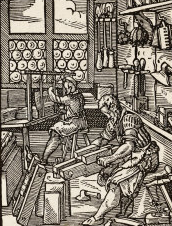Objects in Modernist Literature: “fragments of being” – the ever-becoming of objects
Abstract
While the materiality of the object has been the focus of critical discourse over the last few decades, the tension that has run through the literatures of the 19th and 20th shows the instability of the status of the object and of its function, as it becomes, in a growing materialist society, a properly literary material, between romantic isomorphism and realist referentiality. Modernist literature in Britain, at a pivotal moment between 19th century realism and the New Novel of the 1950s, uses the object as the tool for metaphysical interrogation about the relation of the subject to the world, in a period of hermeneutical and ontological crisis. While calling into question the status of the object, not only in relation to the thing but also to being, the modernist aesthetics of the 1920s and 1930s in Great Britain stages the tension between a distaste for mass production, a fascination for the world as poetic material and an extreme subjectivity in writing. Two categories of objects are studied as privileged materials in this process: clothes, which convey ontological questions, and the doll's house, which adds a metafictional dimension to these questions. A study of texts written by emblematic writers of the period (Woolf, Mansfield, T.S. Eliot and Bowen) shows how the object – both thing and object – is at once reduced to its materiality and invested, if not over-invested, by a narrative and symbolic function, thus creating tensions that remain unsolved. Taking into account this oscillation between its ontological and its ontic status will help us show the infinite transformative power of the object as literary material.
Key-Words: materiality; Modernism; objects; things; Virginia Woolf; Katherine Mansfield; Elizabeth Bowen
Downloads
Published
Issue
Section
License
- Work submitted for publication must be original, previously unpublished, and not under consideration for publication elsewhere. If previously published figures, tables, or parts of text are to be included, the copyright-holder's permission must have been obtained prior to submission.
- Authors of accepted manuscripts will assign to L'Atelier the right to electronically distribute their article, or publish it in any form (Internet, CD ROM, printed copy) but authors will retain copyright and, after the article has appeared in L'Atelier, authors may republish their text (in print and/or electronic form) as long as they clearly acknowledge L'Atelier as the original publisher.


